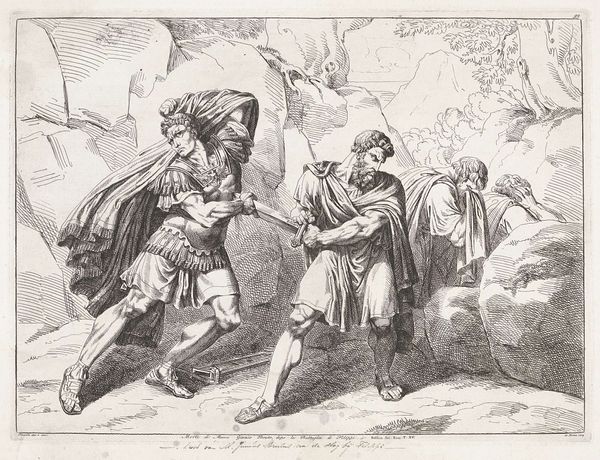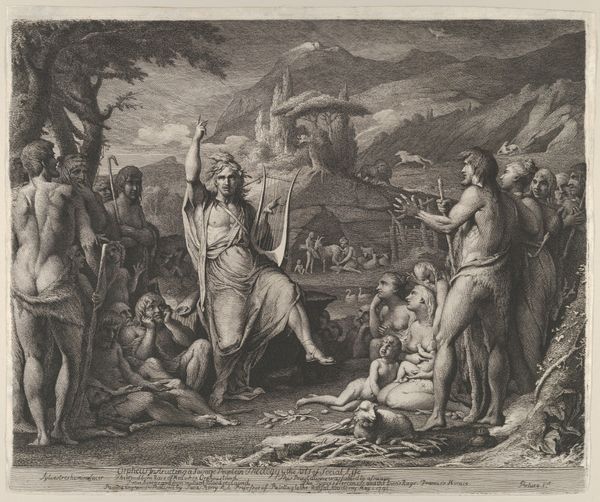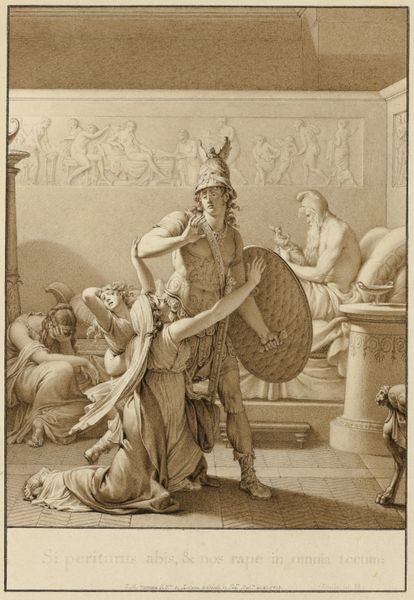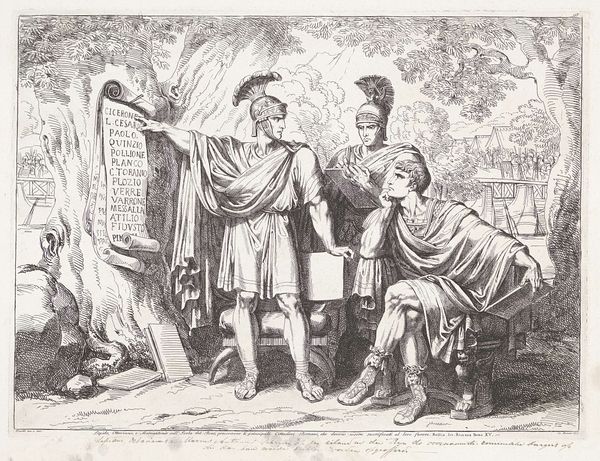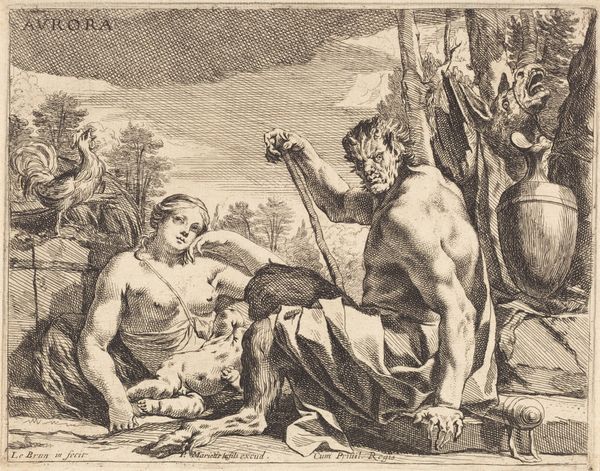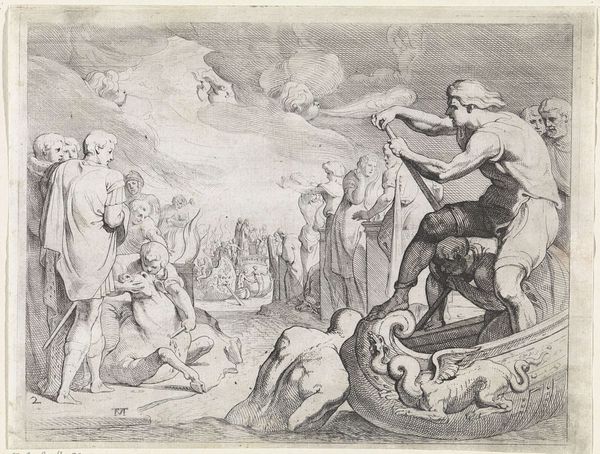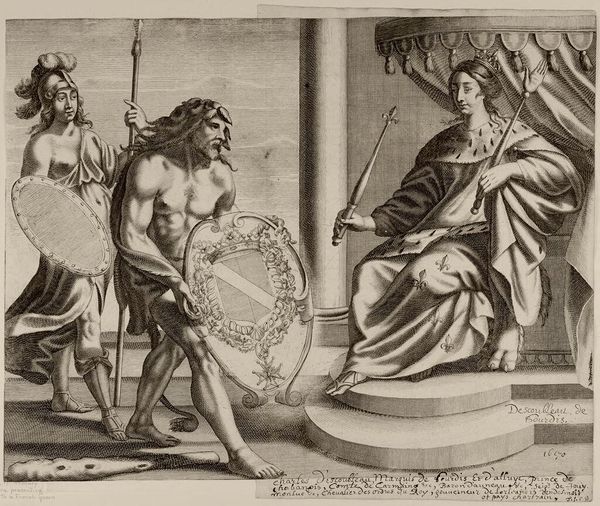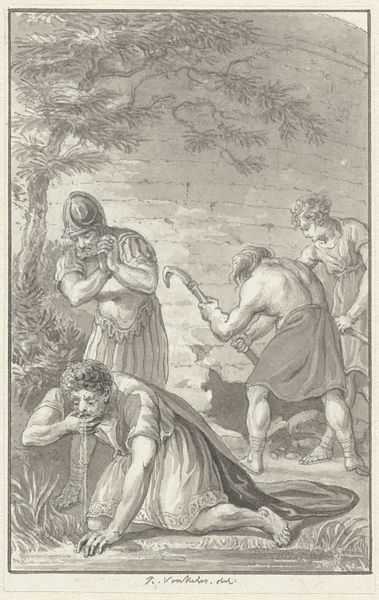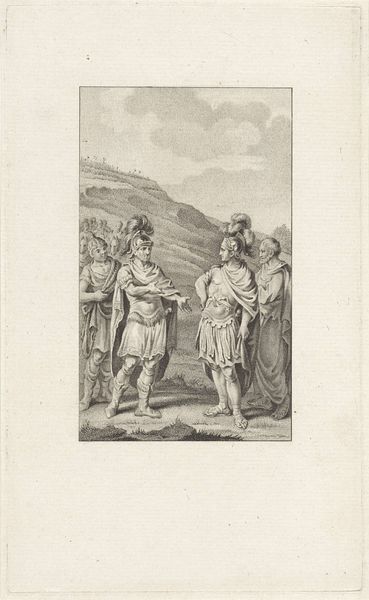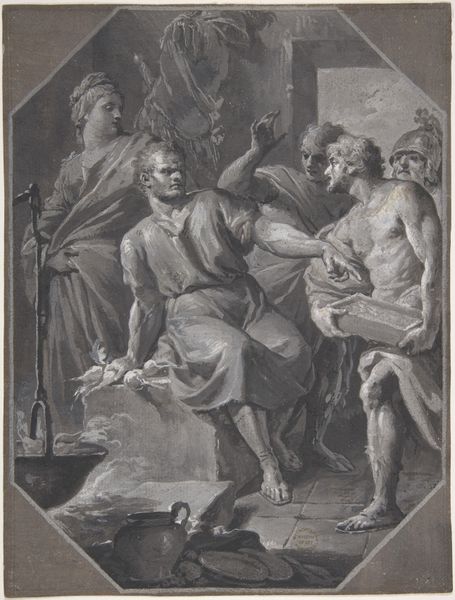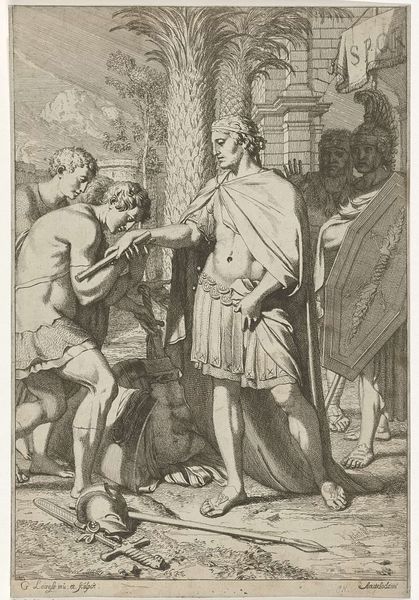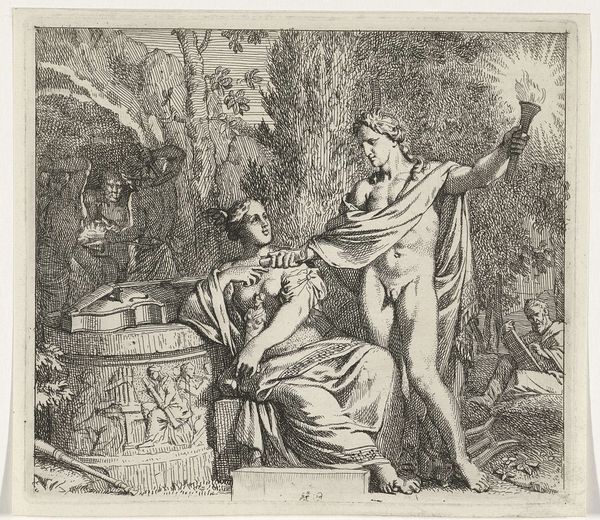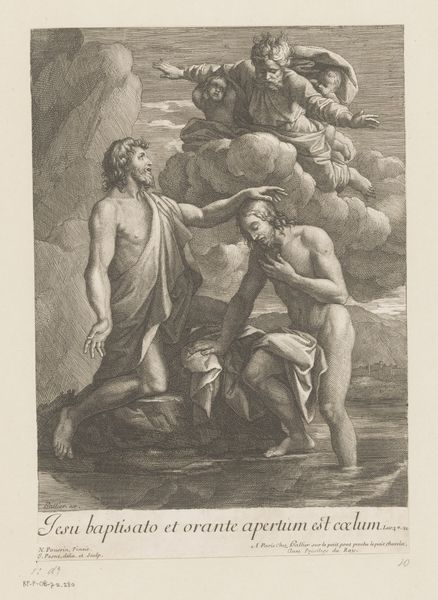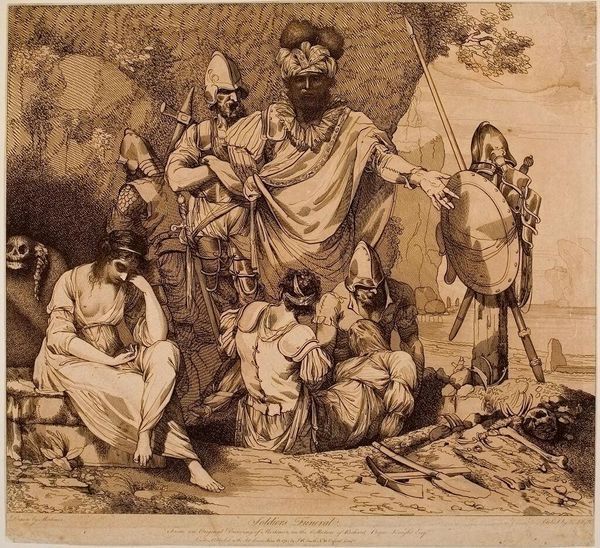
Telemachus Requests Permission from Pluto to Seek His Father in the Underworld 1809
0:00
0:00
drawing
#
drawing
#
neoclacissism
#
figuration
#
history-painting
Dimensions: sheet: 41.5 × 57.8 cm (16 5/16 × 22 3/4 in.)
Copyright: National Gallery of Art: CC0 1.0
Curator: Standing before us is Bartolomeo Pinelli’s 1809 drawing, "Telemachus Requests Permission from Pluto to Seek His Father in the Underworld". It depicts a key moment from Homer’s Odyssey. Editor: Immediately, I'm struck by the theatrical quality of the scene. The earth-toned palette lends a somber and weighty atmosphere to this depiction of the underworld, focusing attention on the musculature and material presence of the figures. Curator: Indeed, Pinelli, drawing on neoclassicism, emphasizes formal clarity to underscore the epic nature of the narrative, representing ideas of legitimate rule in classical mythology. The social context of 19th-century Europe heavily influenced how these myths were interpreted. For example, representations of powerful men can sometimes legitimize contemporary patriarchical societal structures. Editor: It's interesting to note how Pinelli uses simple materials—primarily ink or wash—to evoke a sense of monumentality usually associated with sculpture or grand history paintings. The texture of the paper itself almost feels like aged parchment, enhancing the feeling of ancient drama unfolding. Curator: Right, think about what ‘heroism’ meant then: duty to family, obedience to authority. These were values deeply enmeshed with the political and social fabric of the time, even if cloaked in mythic garb. The contrast between Telemachus, the dutiful son, and the all-powerful Pluto, underscores hierarchical power relations. Editor: And those subordinate figures, hunched in sorrow. Their labor of suffering is quite materially evident; their forms echo the stone-like environment of Pluto’s realm. Do you see how Pinelli, despite referencing classicism, allows glimpses of the physical world, its textures, to seep into the composition? Curator: It begs the question, though: whose perspective is prioritized in these grand narratives? Who has the permission to even seek out their relatives and ancestors, as well as the emotional landscape they were given access to? Does the artist take any considerations regarding social structures? Editor: True. The limited tonality itself, however, brings me back to this idea of 'making do'. How much visual and material complexity can an artist wring out of seemingly restricted means? What does he tell of access and production by doing so? Curator: It is fascinating how artworks like these not only retell stories but actively participate in shaping our understanding of complex social narratives, which has shaped global cultures throughout history. Editor: It highlights the remarkable ability to evoke epic emotions and monumental themes. Its very existence makes me examine my relationship with labor through material consumption and production.
Comments
No comments
Be the first to comment and join the conversation on the ultimate creative platform.
